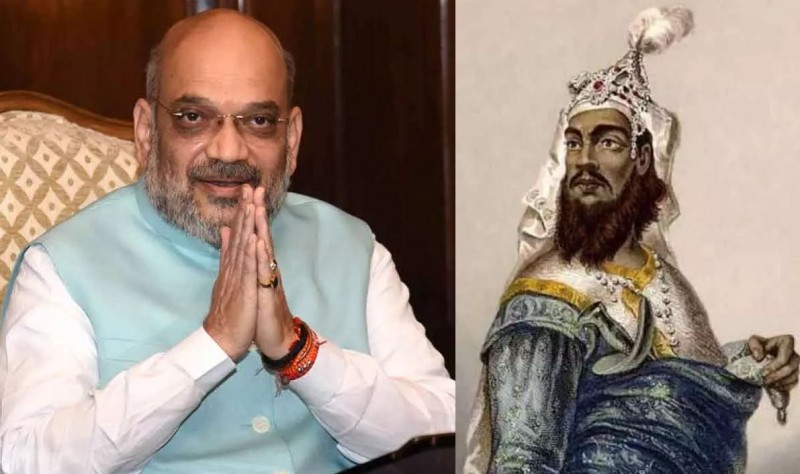
Patna: Home Minister Amit Shah is on his way to Jagdishpur in Arrah, Bihar on April 23, on the occasion of the victory of freedom fighter Babu Kunwar Singh. Due to this, about 1 lakh national flags are ready to be hoisted and a world record is set to be created. Let us know that the name of Babu Kunwar Singh is taken with great respect and admiration. He not only played a key role in the Revolution of 1857 but also caused great harm to the English army by using guerrilla technology.
Who was Babu Kunwar Singh?
One of the revolutionaries of 1857 was Babu Kunwar Singh, Jagirdar of Jagdishpur. He is a descendant of Ujjainia Parmar Kshatriya of Bihar and Bhoja, the popular king of Malwa. In this dynasty, the great Chakravarty emperor Vikramaditya was also born. At the age of 80, Babu Kunwar Singh took battle from the British. He cut his hand himself after being shot in the hand. The contemporary British writer Sir George Trevelyan described in his own words the heroism of Kunwar Singh and the terrible loss of the British Empire by the guerrilla style of his army. According to contemporary British officers, Kunwar Singh was more than 6 feet tall, soft-spoken and had a godlike personality among his people. Veer Kunwar Singh was a fine horseman and hunting was his hobby. In the revolution of 1857, Kunwar Singh, his brother Amar Singh and his general Hare Krishna Singh had caused a lot of damage to the English army by using guerrilla technology.
PhD holder from BHU and eminent historian Dr Shri Bhagwan Singh says that after Maharana Pratap and Chhatrapati Shivaji, Babu Kunwar Singh did the most accurate use of guerrilla technology. He had taken battle from Arrah to Azamgarh, Kanpur and Ballia through a guerrilla warfare style from the British rule. That is why the area of Arrah is called Mewar of the east. According to historian Dr Shri Bhagwan Singh, the Sikh Regiment and Scottish High Lander of the English Army were sent to suppress the rebellion, but Babu Kunwar Singh's army had bitten them with dust. In memory of this, a statue of Babu Kunwar Singh has been installed outside the Sikh Regimental Centre at Ramgarh in Jharkhand. Historians say that Babu Kunwar Singh had prepared for the revolt of 1857 long ago. For this, a gunpowder manufacturing factory was also set up in Jagdishpur. Veer Kunwar Singh was shot in his hand while crossing the River Ganga while returning to Arrah. He had a serious wrist injury. In such a situation, sensing the crisis of poisoning in the body, Kunwar Singh cut off his hand with his own sword and flowed into the river Ganga. Thereafter, Kunwar Singh's army defeated the English army and captured Arrah. Kunwar Singh's condition worsened due to excessive bleeding. After being in a state of unconsciousness for two days, on April 26, 1858, he opened his eyes for the last time and saw the flag on the fort. He died after seeing the flag of Jagdishpur being hoisted in place of the British Union Jack. After Kunwar Singh's death, his brother Veervar Amar Singh took over the command and fought for several months. Then he went to Nepal and stayed among the people of Terai. From there the fight continued, but the Gorkha king of Nepal fraudulently handed them over to the British army. Thereafter, he died in jail. But their fight continued.
Prashant Kishor almost decided to go to Congress, may get big post
Chirag Paswan on attack on uncle Pashupati: 'If found guilty, punish'
'CM Nitish arrives at Rabri's residence after 5 years, Tejashwi comes to welcome...'